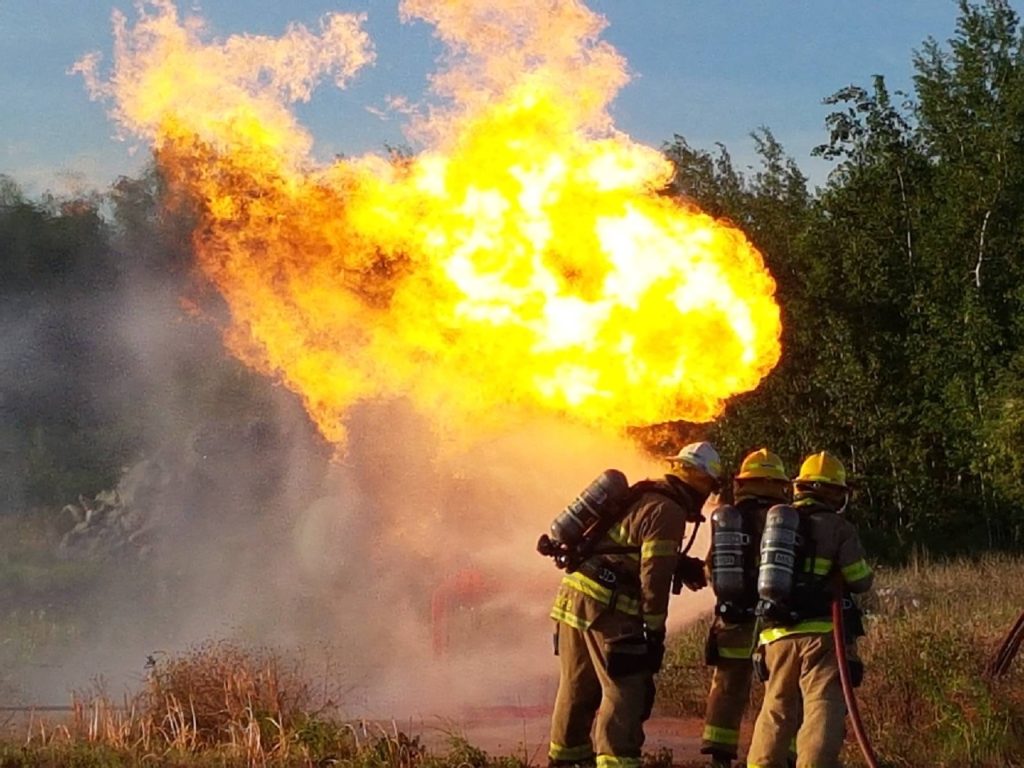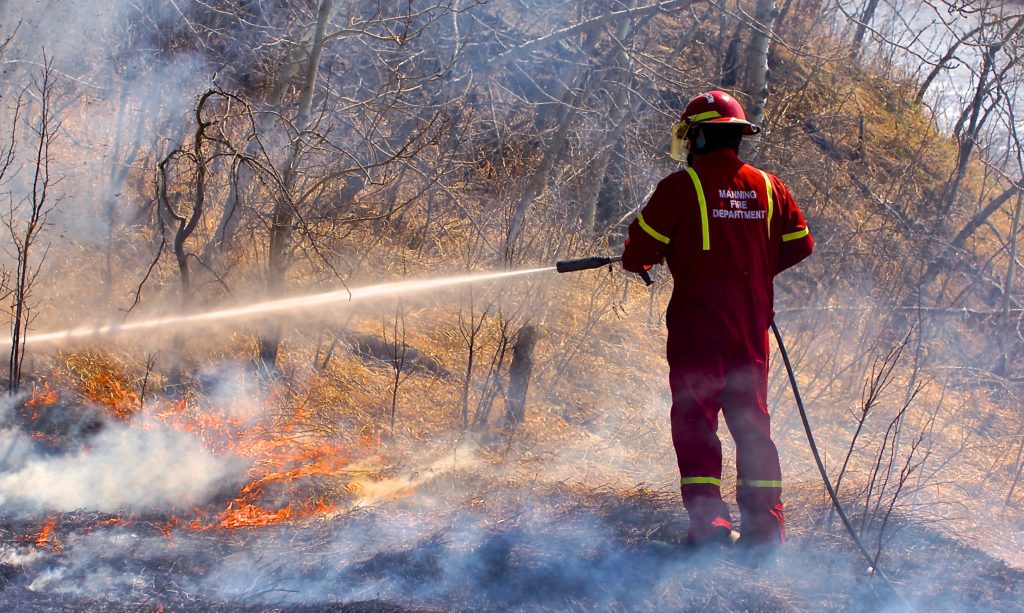Fire Prevention Week occurs from October 3 to 9 across Canada and the United States this year.
Established following the Great Chicago Fire of October 1871, this week has become a time to reflect on fire safety and pay tribute to those who put their lives on the line to protect us from fires.
In several rural communities, a mix of volunteer and full-time firefighters also serve as first responders and are often first on scene for accidents and medical emergencies; they provide medical aid and assist emergency medical services as requested.
Below, we learn how COVID-19 has presented challenges for firefighters in rural Alberta and how some of the ways they have adapted to the pandemic will likely become standard for these close-knit teams in years to come.
Thank you to all the firefighters across rural Alberta for keeping our communities safe during Fire Prevention Week and all year long!
Larry Brolly awaits the day he can look his fellow firefighters in the eye—in person.
“[Firefighting is such] a team sport; knowing your teammates is so important,” said Brolly, who serves as the fire chief for the Town of Manning, located 585 km northwest Edmonton.
“I’ve never heard of a hockey team or football team doing practices by Zoom.”

– Photo provided by High Level Protection Services
As with everyone facing lockdowns and gathering restrictions, firefighters look forward to getting back to training alongside their comrades.
Brolly and Rodney Schmidt, his counterpart who oversees the department two hours north in High Level, said his members yearn for a return to normal when they can train together in person.
“It’s definitely been a learning year for us,” said Schmidt, who has overseen the Protective Services Department in High Level as director since 2002.
Some in-person training was able to occur this summer in the community when COVID-19 numbers were down, and the department’s members and their families were also able to socialize face to face for the first time in a year and a half.
“We had a big family barbecue at a member’s residence, just near the edge of town. It was a great event,” said Schmidt, noting that such events are common among firefighter families during normal times.
“Probably the best thing I’ve learned is [we should] always be cognizant about disease transmission in any call, whether it’s [attending] a COVID positive [case], or a little old lady who is has a headache.”
– Larry Brolly, fire chief of the Manning Fire Department
The firefighters’ ball is another missed opportunity for the department and the High Level community. Until COVID-19 hit, the ball was held annually for 53 years. This year is the second in a row that it has been cancelled.
“It’s really a fun night for the community [to salute] our firefighters and promote fire prevention awareness,” said Schmidt, noting about 300 tickets are typically sold for the event.
While social activities have been limited, Schmidt said he’s seen participation in virtual meetings go up. He attributes that to the fact that people take part from home or wherever they happen to be at the time.

– Photo supplied by the Manning Fire Department
“We have members who are parents that are at home that night because their spouse or significant other is working, so they have the ability to dial in [to meetings],” he explained.
“I think [Zoom’s] something that’s going to be here to stay,” he said of the opportunity to be able to hold both virtual and in-person training and meetings with members and fire officials from other areas.
Firefighters’ attire has also changed.
Now, before responding to any call, firefighters strap on face masks (often N-95 design) and disposable gloves before heading to emergency calls.
Schmidt and Brolly see the wearing of masks and gloves as a positive move and one that will remain long after concerns about COVID-19 have passed.
“Probably the best thing I’ve learned is [we should] always be cognizant about disease transmission in any call, whether it’s [attending] a COVID positive [case], or a little old lady who is has a headache,” said Brolly.
“We’re far more aware of trying not to transmit any type of disease to them, so we’re more willing to [wear] a mask, always use the gloves, and stuff like that,” he said.
“It’s the education and the reality [of] that learning process about reducing disease transmission [that] might be the best thing that comes [out of] COVID,” said Brolly.
“We’re definitely seeing that fatigue level, especially with the medical [emergency] calls. Some members are just tired [from] those calls day in and day out. It’s a volunteer organization, so that makes it difficult. That being said, we still have an excellent group here that gets the job done.”
– Rodney Schmidt, fire chief and director of the Protective Services Department in High Level
Keeping a full slate of firefighters ready for the next emergency continues to be an ongoing challenge for both fire departments. Schmidt said firefighters aren’t all first responders (those who are able to provide basic life support), and it’s not necessary to take on that responsibility to become a firefighter.
“That’s probably the biggest hit we’ve had,” said Schmidt of the difficulty in recruiting. Although he has a base of six full-time firefighters in the department, including himself, they rely heavily on volunteers to support their work. He prefers to have a pool of 40 volunteers to draw from, rather than his current slate of just below 30. Manning is also about 10 people short of meeting its goal of 30 volunteers.
“It’s really hard to recruit during a pandemic,” Schmidt said.
Medical emergencies make up about two thirds of the calls the fire department receives, and those calls have risen in the past year. High Level’s annual response tally remains consistent at around 400 calls even though a slower wildfire season in the region meant fire calls were down this year.
“We’re definitely seeing that fatigue level, especially with the medical [emergency] calls. Some members are just tired [from] those calls day in and day out. It’s a volunteer organization, so that makes it difficult,” said Schmidt.
“That being said, we still have an excellent group here that gets the job done.”
